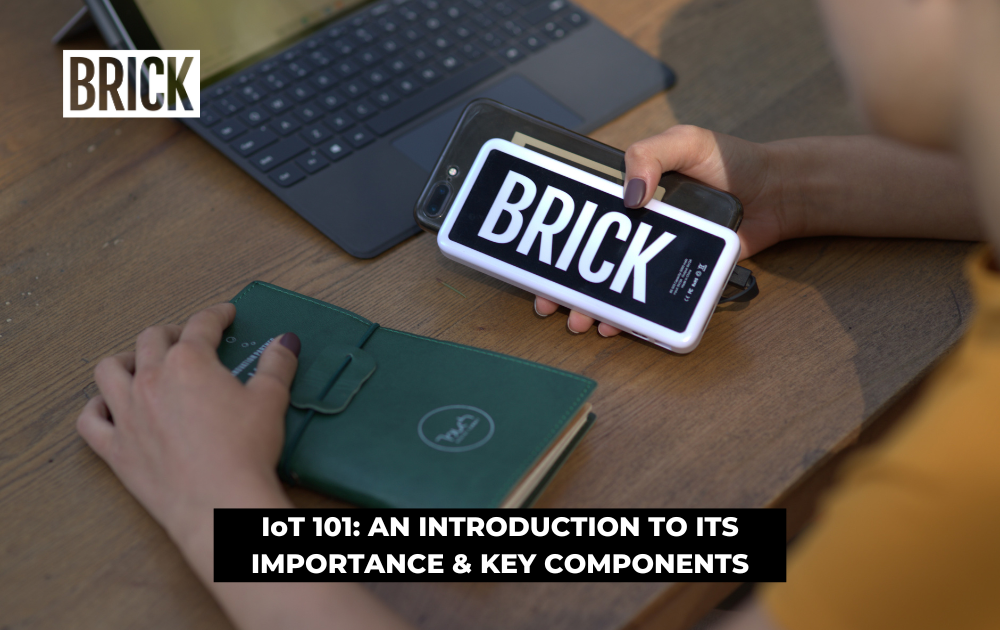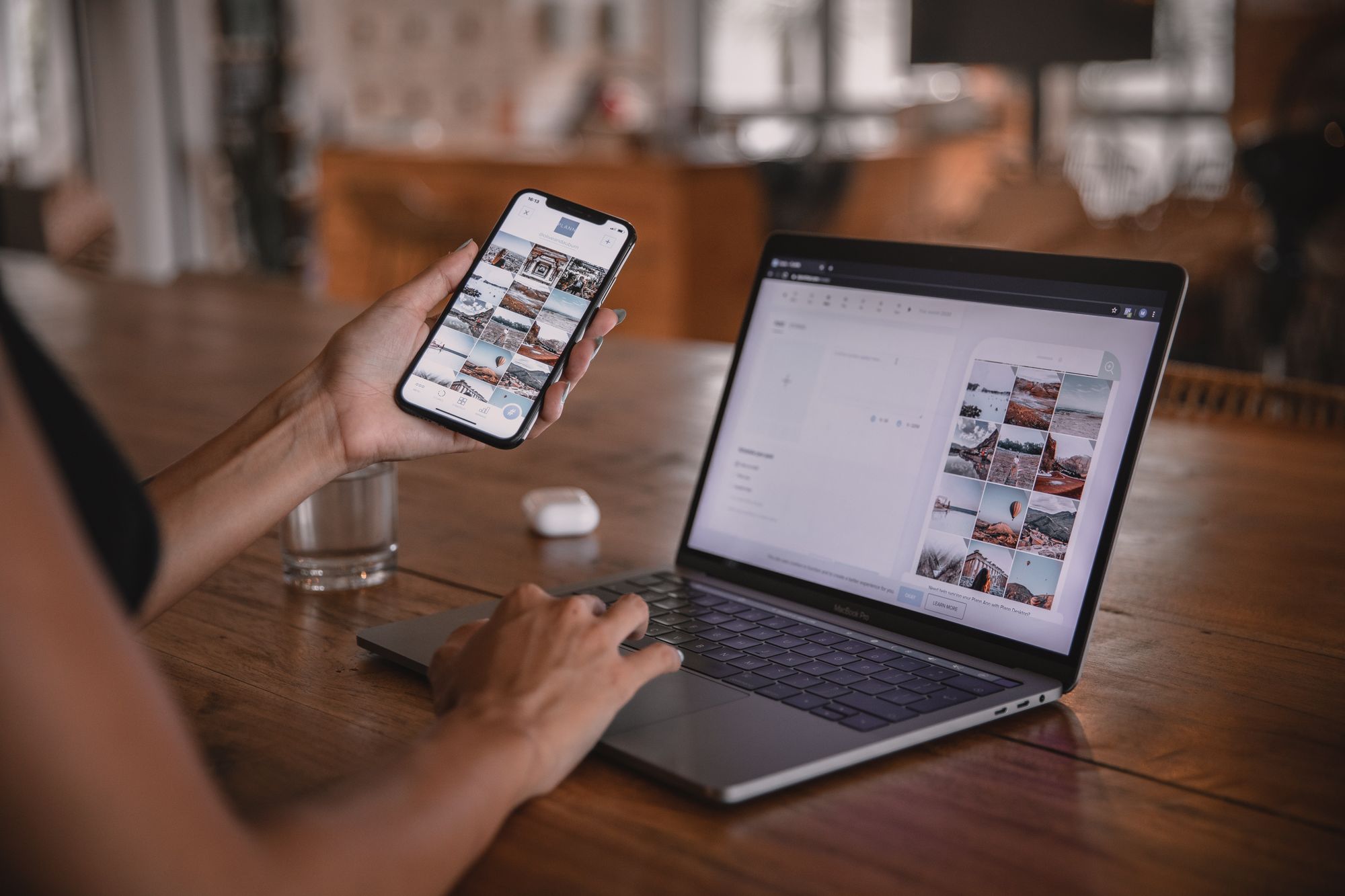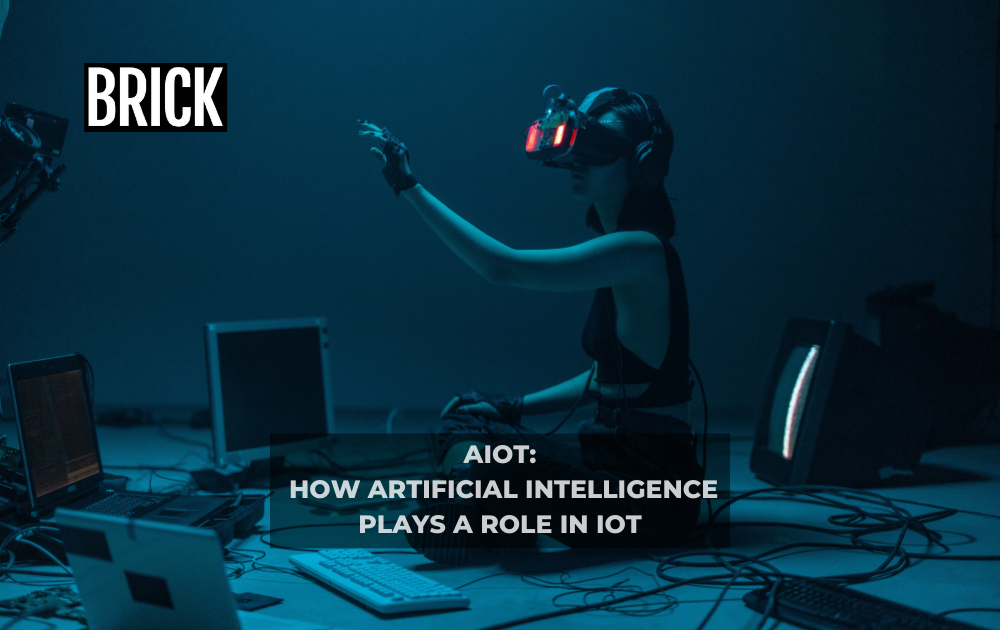IoT 101: An introduction to its importance & key components
The Internet of Things is a concept where devices can collect and share information without needing humans. IoT is a powerful tool that can help people make better decisions and improve the world around us.

The Internet of Things, or IoT, is a concept where devices can collect and share information without needing humans. These devices can be anything from electronics to appliances in your home. For example, Brick stations and powerbanks are examples of IoT devices.
Overall, IoT is a powerful tool for collecting and sharing information between devices, which can help people make better decisions and improve the world around us.
IoT Basics: Understanding the Internet of Things
What is IoT?
The Internet of Things (IoT) is “things” that are embedded with sensors, software, and other technologies to connect and exchange data with other devices and systems over the Internet. Or simply put, it's connected devices.
For example, the Google IoT Cloud is a service that lets people connect and manage their devices, and also collect data from them. This can help businesses make better decisions based on customer behavior.
IoT is a big deal because it allows many different kinds of devices to work together and share information. This can help industries like healthcare, agriculture, and transportation work more efficiently.
The Five Components Behind the IoT Ecosystem
- Sensors and embedding components - Sensors are small pieces of hardware that collect data from devices like smoke detectors and GPS. Actuators receive signals and act accordingly, such as adjusting the temperature of a smart AC.
- IoT Clouds - All components need to connect to function properly. The IoT cloud collects and manages data, acting as the "brain" of the ecosystem.
- IoT analytics and data management - Data is essential for businesses to optimize strategies for the future, and IoT analytics and data management allow individuals to make decisions by analyzing raw converted data.
- End-user devices and user interference - The interface is what the end user sees on their device, such as high-quality designs on applications or programs, making it easy and accessible to control. Examples include ATMs and remote controls.
- Connectivity - Overall, IoT relies on the connectivity and collaboration of its different components to function properly, allowing for the collection and management of data and providing a user-friendly interface for individuals.

Behind the IoT: Key Technologies and Innovations
What made IoT possible?
IoT has become a practical and powerful technology due to the availability of various key components. These include low-power sensors, which can measure different factors, and connectivity that allows all devices to communicate with each other. Cloud computing platforms provide a place to store and manage all the data collected by IoT devices.
Machine learning and analytics help individuals and businesses to make sense of this data, while conversational AI allows people to interact with IoT devices using voice commands. These technologies have made IoT more useful and accessible to everyone.
According to Statista, the number of connected IoT devices in 2022 was 13.14 billion, which is amazingly almost 4 million devices more compared to 2020. Five years ahead, there will be 25.21 billion, and in 2030, 29.42 billion connected IoT devices. Which is almost twice as many units compared to this year.
In 2020, 60 percent of all IoT devices fell under the consumer segment. IoT devices are used within all different industries, both major and minor. The highest number of IoT devices in 2030, will be found in China, with 5 billion devices. In other words, IoT devices will continue to grow over the next eight years. But in 2030, it will stay at the same level in the coming ten years.
The societal impact of IoT is both smart homes and offices save energy costs since individuals can control both temperature and electricity levels. In other words, IoT has a deeply meaningful impact on society overall. In the medical field, hospitals can monitor patients remotely and adjust their work regarding new smart devices that enable new and developed approaches. This also goes hand in hand with environmental factors, such as minimizing waste, expenses, and hassles, which also contribute to positive adapted living conditions.

IoT in Action: The Impact and Contributions of IoT
IoT can automate and simplify everyday things, saving time and resources for individuals and companies. There are various types of IoT, including industrial, commercial, infrastructure, and defense, as well as consumer services like wireless devices, asset tracking, smart healthcare, personal security, and navigation tools.
Tracking devices with IoT-enabled sensors can provide navigation tools to people with visual impairment, helping them navigate their environment and stay safe. These devices also have personal locator functions for added safety.
Waymap is an example of a company that provides a personal navigation tool. Waymap guides you indoors and outdoors and is designed to help individuals with disabilities, e.g. mobility impairment and vision. Making life and localization simplified for everyone included. Waymap received multiple awards and was the finalist in categories such as innovation and social impact.
Overall, IoT has changed the way we interact with the world and has made everyday tasks more efficient and accessible.
How we have used IoT throughout times
A short summarized timeline - how it was coined down
If we rewind the tape, IoT was first talked about in the 1980s when some university students wanted to track a Coca-Cola vending machine's supplies. Unfortunately, the technology wasn't advanced enough to add sensors to objects. The idea was too complex for that time.
In 1999, a computer scientist named Kevin Ashton came up with the "Internet of Things" concept. He wanted to track products using radio-frequency identification chips to see where they were in the supply chain. Ashton was working at Procter & Gamble at the time. Since then, the term "IoT" has become widely used and has grown in popularity over the years.
Examples of IoT Innovations
- The first smart refrigerator was introduced by LG in June 2000, after a three-year project that involved a team of 55 researchers and an R&D budget of 49.2 million. This fridge had an internet connection, making it a great example of an IoT product.
- The release of the iPhone in 2007 changed the game for mobile devices. Before the iPhone, phones were not considered "smart" devices and had clunky keyboards. The iPhone set a new standard for innovation in mobile devices, allowing for better quality, smaller size, longer battery life, and new features.
- In 2008, the number of connected devices around the world exceeded the number of people on the planet. This marked a significant milestone for the IoT industry.
- Google began testing driverless cars in 2009, using a combination of cameras, sensors, radars, GPSs, and lasers to perceive the world around them. The self-driving car project was led by university professor Sebastian Thrun and involved six Toyota Priuses and an Audi TT.
- In 2011, the smart thermostat was introduced to the market by Google's Nest. This device was unlike any other thermostat available at the time, with a sleek design and the ability to program itself for energy-saving.
Top trends of IoT
- Blockchain, to describe blockchain simply, you could compare it to google docs. When you create the document, you can pick who you want to share it with, and who has access to view and make changes. There’s no copy made, it’s the same document with limited access that the creator has predetermined. Blockchain is not really like google docs, but it has the same concept. It’s a digital supply chain, with a database at its core which enables storage that is chained together. IBM is the largest company in the world that’s actively working with blockchain. It’s a cloud platform that enables cognitive solutions and has developed data governance and application tools for more than 220 businesses.
- IoT Security, the advanced technology available today has a big influence on people in general, considering almost everyone is using an IoT device. This has put the constant need for security in the spotlight. With more innovation comes more threats - but there’s a solution for everything.
- Traffic Management, this component is fundamental considering the importance of managing challenges such as traffic and blocking problems in regards to IoT globally. There are countless smart solutions that companies implement, to minimize crowding and unnecessary traffic.
- Digital Twins, the digital equivalent of a physical object in real-time, was recognized in 2020. This can be used in multiple different matters, to diagnose, monitor, control, and optimize. This phenomenon is predicted to grow and double in growth rate by 2025.
- Smart Cities will leap ahead like nothing before, several government institutions have begun IoT technology projects. This means that different smart solutions will be implemented like energy utilization, sustainable development, and traffic congestion.
- IoT 5G Technology, The new age of wireless technology, transforming and changing technological growth innovatively. 5G technology contributes to delivering the full potential of IoT. 5G Technology holds powerful connectivity and leads to more trustworthy IoT devices. It’s also one of the most outstanding emerging technologies in 2022.

Protecting IoT: Understanding and Preventing Security Concerns in the IoT
Risks & Concerns
Many individuals are worried about security vulnerabilities when it comes to smart home devices. If we're going to see deeply implemented IoT solutions in greater advance, this factor needs to be addressed by manufacturers.
Unwanted public profile - Companies gather information from users through the application or website that they’re using, the terms of service is a document. Many people do not read the full document and just accept it. Depending on the company, they’ll gather information about a user’s activity and habits. To get a better understanding, I’m going to quote from insider intelligence: For example, an insurance company might gather information from you about your driving habits through a connected car when calculating your insurance rate.
Too much data - Another factor that can be seen as a problem by the public eye, is that IoT devices can generate tons of data. Hardly 10,000 households can generate 150 million discrete data points every day, according to a report from a Federal Trade Commission entitled “Internet of Things: Privacy & Security in a connected world. This means that you indirectly provide information about your internet usage, which is vulnerable. This creates greater chances of intrusion by hackers that can access and exploit your data.
Eavesdropping - A person's connected device could be at risk for the virtual intrusion of their home by both hackers and manufacturers. For example, in late 2020 there was a bug that affected millions of IoT devices regarding live video and audio streams. This critical flaw enabled hackers to take over home devices, everything from baby monitors to security webcams. The flaw was found in devices connected through a specific IoT cloud platform. It posed a large-scale risk considering users’ privacy and security could be exploited.

IoT & Charging Devices: How Powerbanks and Bricks Connect
Brick Stations and Power Banks
The Brick infrastructure in regards to powerbanks is deeply connected to IoT, due to both the software and app that’s implemented within the Brick network. The software is both implemented in the dashboard and the app. Both the Brick stations and powerbanks are IoT solutions. The dashboard is used by both our network and market partners to track the powerbank statistics, e.g. how much powerbanks are rented out every month.
Partners can even see the powerbank statistics over several months. The Brick stations are connected with SIM cards to enable reliable connectivity. Without this factor, renters can not rent nor return the powerbanks. IoT is extensive and refers to the abovementioned: “IoT is a concept where devices can collect and share information, without needing humans to do it for them”.
Brick’s vision is to shorten the transition from mass to necessary consumption by providing shared alternatives to what otherwise would have been purchased.
Brick aims to build an infrastructure that gives entrepreneurs globally a plug & play one-stop-shop solution for starting and scaling their sharing economy business.

Conclusion
In conclusion, IoT devices will continue to grow over the coming years. The 5G technology will enable better-developed and connected IoT devices. IoT is not only affecting current industries but is having a major impact on society and individuals' living conditions, in general. IoT consumer companies need to think about the image they are creating for their end-user regarding data and public perception. We at Brick work with being as transparent as possible, and we collect as little data as possible.
We are working forward for a successful future regarding powerbanks and IoT devices. But also in terms of our sharing economy infrastructure so that all mobile IoT devices can be implemented within the scope of our work. Do you want to know more about our work? Feel free to visit our website or read our articles. Interested in bringing our powerbank solution to your local market? Read more about our partnerships!




